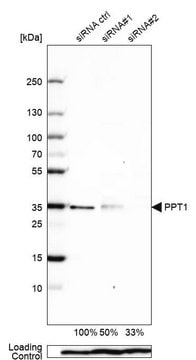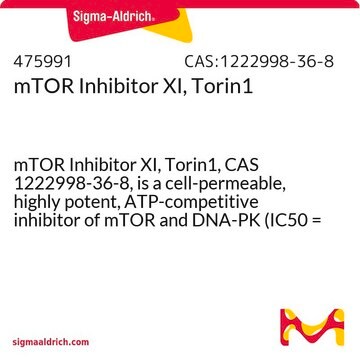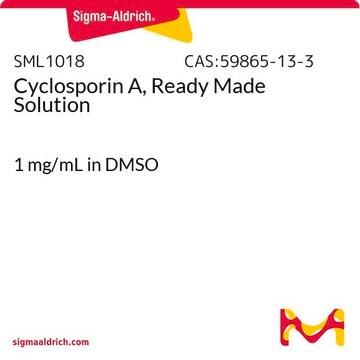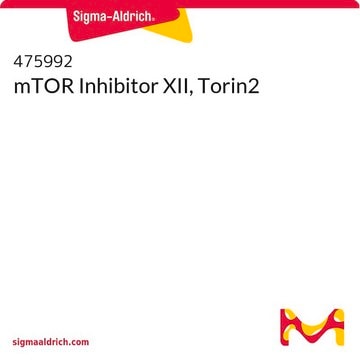342500
FK-506, Streptomyces sp.
Immunosuppressant that blocks T cell proliferation in vitro by inhibiting the generation of several lymphokines, especially IL-2.
Synonym(s):
FK-506, Streptomyces sp., Tacrolimus
About This Item
Recommended Products
Quality Level
Assay
≥98% (TLC)
form
solid
manufacturer/tradename
Calbiochem®
storage condition
OK to freeze
desiccated
color
off-white
solubility
DMSO: 10 mg/mL
methanol: 5 mg/mL
shipped in
ambient
storage temp.
2-8°C
InChI
1S/C44H69NO12.H2O/c1-10-13-31-19-25(2)18-26(3)20-37(54-8)40-38(55-9)22-28(5)44(52,57-40)41(49)42(50)45-17-12-11-14-32(45)43(51)56-39(29(6)34(47)24-35(31)48)27(4)21-30-15-16-33(46)36(23-30)53-7;/h10,19,21,26,28-34,36-40,46-47,52H,1,11-18,20,22-24H2,2-9H3;1H2/b25-19+,27-21+;/t26-,28+,29+,30?,31+,32-,33+,34-,36+,37-,38-,39+,40+,44+;/m0./s1
InChI key
NWJQLQGQZSIBAF-HZXKVGIDSA-N
General description
Biochem/physiol Actions
Immunosuppressant that blocks T cell proliferation
Warning
Reconstitution
Other Notes
McCall, E., et al. 1996. Circ. Res. 79, 1110.
Raufman, J.P., et al. 1996. J. Biol. Chem. 271, 19877.
Rokaw, M.D., et al. 1996. Am. J. Physiol. 271, C194.
Legal Information
Signal Word
Danger
Hazard Statements
Precautionary Statements
Hazard Classifications
Acute Tox. 3 Oral - Eye Irrit. 2 - Repr. 2 - STOT RE 2
Storage Class Code
6.1C - Combustible acute toxic Cat.3 / toxic compounds or compounds which causing chronic effects
WGK
WGK 3
Certificates of Analysis (COA)
Search for Certificates of Analysis (COA) by entering the products Lot/Batch Number. Lot and Batch Numbers can be found on a product’s label following the words ‘Lot’ or ‘Batch’.
Already Own This Product?
Find documentation for the products that you have recently purchased in the Document Library.
Customers Also Viewed
Our team of scientists has experience in all areas of research including Life Science, Material Science, Chemical Synthesis, Chromatography, Analytical and many others.
Contact Technical Service












